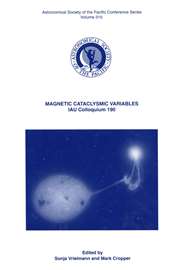No CrossRef data available.
Article contents
Transformations and Modern Technology
Published online by Cambridge University Press: 12 April 2016
Abstract
Transformations are a central issue in making a global network do more than simple monitoring of low-amplitude variability. I explore the approach of observing at a much narrower instrumental bandwidth than is required for the scientific problem; such an approach would have the following advantages:
-
• transformations can be handled in standard fashion at the instrumental level; at the scientific level, they can be avoided entirely,
-
• users have almost complete freedom in specifying the shape of the scientific passbands, hence comparison of observational data with stellar atmosphere models can be maximally effective,
-
• standard star observations can be used repeatedly, for programmes running concurrently in different scientific photometric systems,
-
• an observer can use existing standard-star observations to create his own specially-tailored photometric system from scratch,
-
• all-sky homogeneity of the instrumental system can be tested against space photometry such as that provided by HIPPARCOS; this will benefit other scientific systems synthesized from the same instrumental system.
Key components in the hardware will be array detectors with low readout noise and a calibration lamp system designed specifically for this application. A data base provides the link between the observations (in the instrumental system) and the results (with scientific passbands defined by the end user).
Information
- Type
- Session 5 Global Networks
- Information
- Copyright
- Copyright © C.J. Butler and I. Elliottt 1993

